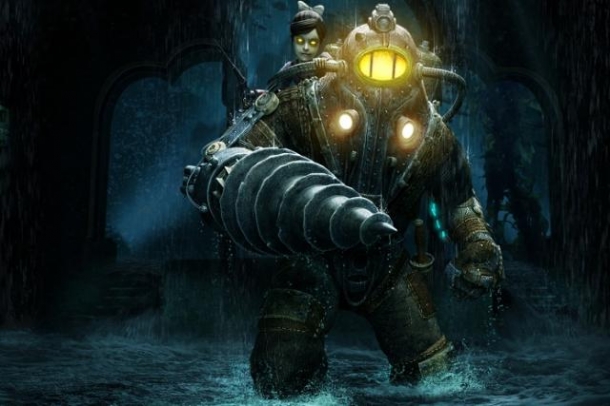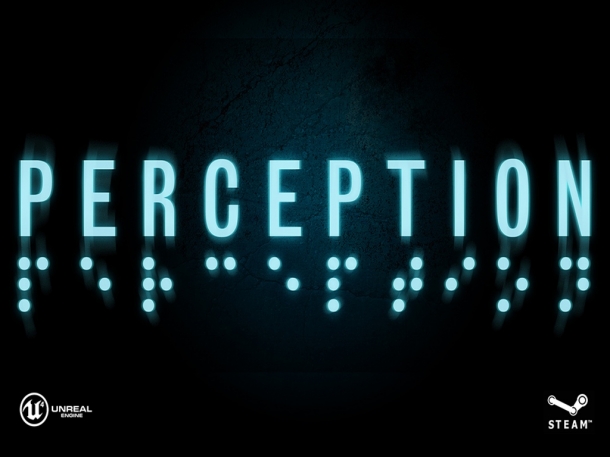Warning: The following description may contain major plot spoilers.
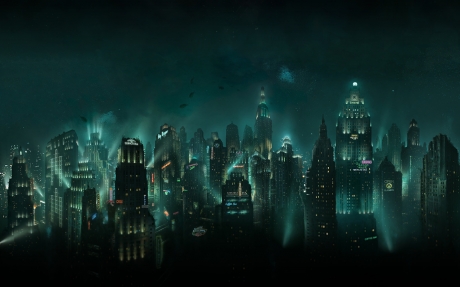
BioShock and BioShock 2 both take place in the fictional underwater city of Rapture; a city built in the late 1940's by business tycoon and objectivist Andrew Ryan after his disillusionment first with the Russian system of governance, and then, following his migration to America, with the American system of government. Rapture was intended to be a free market utopia that would allow humanity's most elite peoples to work, live, and prosper away from the oppressive hands of the world's governments and religions.
Although initially an apparent success, with booming economic and cultural growth, society in Rapture was soon radically altered when scientists discovered a substance called ADAM in sea slugs on the ocean's floor.
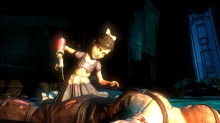 A means of harvesting ADAM was invented using little girls, named "Little Sisters", implanting the sea slugs in their stomachs.
A means of harvesting ADAM was invented using little girls, named "Little Sisters", implanting the sea slugs in their stomachs.
After various experiments were conducted on it, this substance gave rise to what are called plasmids, which would overwrite a person's genetic material, granting them superhuman-like abilities, like the ability to manipulate fire or electricity, or to manipulate objects with telekinesis.
However, it soon became apparent that ADAM use could lead to mental instability and addiction in its users, and along with other political and social movements within Rapture, the Little Sisters became targets of those desiring more ADAM.
To protect the Little Sisters, the Big Daddies were created; mentally conditioned and mutated humans in armored diving suits whose whole world revolved around the bond they shared with their Little Sister. The Big Daddies would violently attack anyone who posed a threat to their Little Sister.
With society in Rapture gradually breaking down a number of powerful factions came to the forefront and sought to wrestle control of Rapture from Ryan. Tensions mounted and soon civil war broke out between the various groups and classes that occupied Rapture.
Rapture soon became a dystopian nightmare, with ADAM-addicted 'Splicers' roaming the city in search of Little Sisters to harvest, and the few remaining sane citizens left to hide and scavenge. BioShock and BioShock 2 both take place after civil war has ravaged the city, but factions continue to compete violently for control of the city and its inhabitants.
BioShock Infinite
The primary setting of BioShock Infinite, by contrast, is a city suspended in the air by giant blimps and balloons, called Columbia.
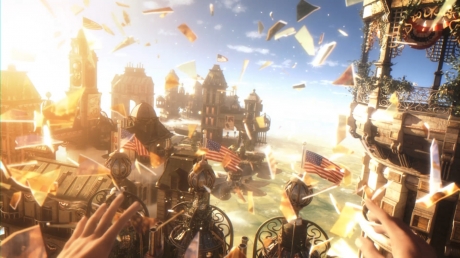
Columbia, unlike Rapture, was built and launched at the behest of the American government and President William McKinley. While Rapture was a secret attempt to build a city free from the hands of oppressive government, Columbia was built as a fantastic show of American power and ingenuity and was launched to much fanfare.
While officially Columbia was a sort of floating fair that would serve as an ambassador to America across the world, in actuality the city was a heavily armed battleship capable of waging large scale war.
After causing an international incident by firing on Chinese civilians during the 'Boxer Rebellion', Columbia was disavowed by the United States government. Turned on by its own people, Columbia opted for isolation and hit itself from the world below, becoming in effect an almost mythical entity.
Meanwhile, in Columbia itself, a number of different factions had risen up and competed for power and control of the city.
 Ultimately, civil war broke out, and eventually only two core factions remained: the Founders, led by Zachary Hale Comstock, who represent the city's founding fathers and ruling class, and the Vox Populi, a populist resistance movement led by Daisy Fitzroy.
Ultimately, civil war broke out, and eventually only two core factions remained: the Founders, led by Zachary Hale Comstock, who represent the city's founding fathers and ruling class, and the Vox Populi, a populist resistance movement led by Daisy Fitzroy.
Lie Rapture, Columbia transformed into a dystopia, ravaged by ongoing civil war. A number of key themes are therefore present across both the original BioShock games and BioShock Infinite, although Infinite will also focus on concepts that were rarely touched upon in the first two titles, such as racial purification and segregation, class warfare, and ultra-nationalism.
